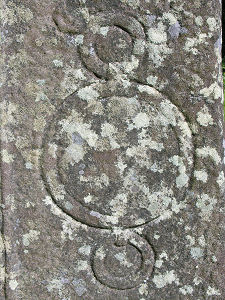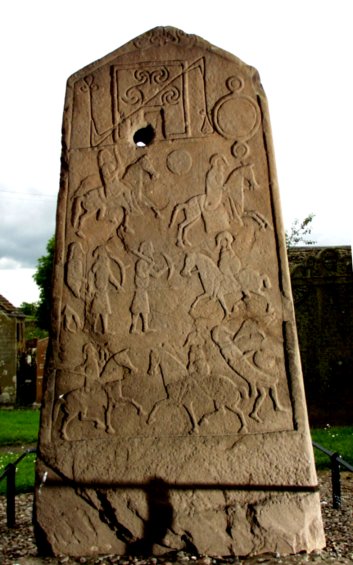It looks like you're using an Ad Blocker.
Please white-list or disable AboveTopSecret.com in your ad-blocking tool.
Thank you.
Some features of ATS will be disabled while you continue to use an ad-blocker.
share:
reply to post by angelchemuel
Yes, Myrddyn/Merlin, the Caledonian -we've kind of forgotten about him, so far!
You know, some of the stones show a 'cauldron' - let me put those up later for a proper look. A cauldron, a grail? I wonder?
Yes, Myrddyn/Merlin, the Caledonian -we've kind of forgotten about him, so far!
You know, some of the stones show a 'cauldron' - let me put those up later for a proper look. A cauldron, a grail? I wonder?
PonderingSceptic
beansidhe
reply to post by PonderingSceptic
Thanks, they do have the same motifs there, especially the double disc I notice. Where are those tools from?
I can't upload photos at the moment but I'll do it later tonight.
Thanks PonderingSceptic
These come from Lithuania. During XIXage paganism was still practiced there. Distaffs or some other tools were often given as a gift, so they had numerous ornaments, symbols or sometimes anicient calendars carved on them. Similar distaffs were used since 4000BC in the area. Ornaments didn't survive that long, but the form is the same.
Each disk (on these tools) is ether called a star or a sun (and sometimes one of them is changed to a cross).
These symbols are truly ancient in the north too and not just in the Med. That's good to know, thanks. Are you from that area, and do you know anything of the myths from around the first couple of centuries?
Never mind, maybe I'll just u2u it first.
It's too speculative lol.
Sorry.
It's too speculative lol.
Sorry.
edit on 25-3-2014 by muzzleflash because: (no reason given)
Please forgive if I'm off on a slight tangent here... just thinking out loud! but I was wondering if Arthur and Dun Eidyn (Edinburgh) might be linked
back to the Dan peoples and Scandinavia?
If Arthur did indeed have links with Edinburgh, perhaps even be "from" Dun Eidyn.... (Dan Eidyn??)
What parallels might there be in Norse/scandinavian legend?
Well, Eidyn (Edin) looks and sounds a lot like the Norse god Odin to me! and.... guess who his son was???
(Ar)THOR!
So, a warrior God called Thor came "from" Odin!
Also, guess what there's a dragon connection too... in the Ragnarok Norse myth, Thor fights a Serpent Dragon!
Anyways... I'm just rambling!!! LOL
If Arthur did indeed have links with Edinburgh, perhaps even be "from" Dun Eidyn.... (Dan Eidyn??)
What parallels might there be in Norse/scandinavian legend?
Well, Eidyn (Edin) looks and sounds a lot like the Norse god Odin to me! and.... guess who his son was???
(Ar)THOR!
So, a warrior God called Thor came "from" Odin!
Also, guess what there's a dragon connection too... in the Ragnarok Norse myth, Thor fights a Serpent Dragon!
from wikipedia page on Ragnarok
"The serpent Jörmungandr opens its gaping maw, yawning widely in the air, and is met in combat by Thor. Thor, also a son of Odin and described here as protector of the earth, furiously fights the serpent, defeating it..."
Anyways... I'm just rambling!!! LOL
beansidhe
PonderingSceptic
beansidhe
reply to post by PonderingSceptic
Thanks, they do have the same motifs there, especially the double disc I notice. Where are those tools from?
I can't upload photos at the moment but I'll do it later tonight.
Thanks PonderingSceptic
These come from Lithuania. During XIXage paganism was still practiced there. Distaffs or some other tools were often given as a gift, so they had numerous ornaments, symbols or sometimes anicient calendars carved on them. Similar distaffs were used since 4000BC in the area. Ornaments didn't survive that long, but the form is the same.
Each disk (on these tools) is ether called a star or a sun (and sometimes one of them is changed to a cross).
These symbols are truly ancient in the north too and not just in the Med. That's good to know, thanks. Are you from that area, and do you know anything of the myths from around the first couple of centuries?
That is the area where I'm located. There are numerous myths from that time.
Gordi The Drummer
Please forgive if I'm off on a slight tangent here... just thinking out loud! but I was wondering if Arthur and Dun Eidyn (Edinburgh) might be linked back to the Dan peoples and Scandinavia?
If Arthur did indeed have links with Edinburgh, perhaps even be "from" Dun Eidyn.... (Dan Eidyn??)
What parallels might there be in Norse/scandinavian legend?
Well, Eidyn (Edin) looks and sounds a lot like the Norse god Odin to me! and.... guess who his son was???
(Ar)THOR!
So, a warrior God called Thor came "from" Odin!
Anyways... I'm just rambling!!! LOL
Sounds good to me man. When I was doing research on the family tree and the name origin it was amazing to see so many variations of the name due to local, phonetic spelling and pronunciation there among the Celts. So yea Edin is certainly Eidyn. English doesn't like the Celtic free use of so many vowels. Not only in spelling but pronunciation.
Just some other examples...the Welsh name Davis said with the strong A sound here but in Wales its like long a Daaavis. And Evens is Eveeens like even steven. If you were not sharp you would never know by sound, although the spelling is the same, that folks were actually saying the same word. By the way these are not my name although my ggrandmother was a Davis. What set me off on this ramble was Odin. My gg grandmothers dads name was Ogden . Certainly Ogden is some deep Welsh form of Odin.
muzzleflash
Never mind, maybe I'll just u2u it first.
It's too speculative lol.
Sorry.edit on 25-3-2014 by muzzleflash because: (no reason given)
Don't be.
But U2U me if you like
reply to post by Gordi The Drummer
Dan Eidyn? (Eden??? Lol!)
Edinburgh
Am I just having one of those moments, or is unlikely that a place name would derive from a place name in a poem? Wouldn't the place have to have a name first, before it could be mentioned in the poem (if you see what I mean)?
And of course, Arthur's Seat isn't far from the castle at all.
Arthur - Thor -Dragon - wow, it's possible, I guess. I don't see why one wouldn't have influenced the other.
Dan Eidyn? (Eden??? Lol!)
"Edin", the root of the city's name, is most likely of Brittonic Celtic origin, from the Cumbric language or a variation of it that would have been spoken by the earliest known people of the area, an Iron Age tribe known to the Romans as the Votadini, and latterly in sub-Roman history as the Gododdin. It appears to derive from the place name Eidyn mentioned in the Old Welsh epic poem Y Gododdin.[12][13][14]
Edinburgh
Am I just having one of those moments, or is unlikely that a place name would derive from a place name in a poem? Wouldn't the place have to have a name first, before it could be mentioned in the poem (if you see what I mean)?
And of course, Arthur's Seat isn't far from the castle at all.
Arthur - Thor -Dragon - wow, it's possible, I guess. I don't see why one wouldn't have influenced the other.
PonderingSceptic
beansidhe
PonderingSceptic
beansidhe
reply to post by PonderingSceptic
Thanks, they do have the same motifs there, especially the double disc I notice. Where are those tools from?
I can't upload photos at the moment but I'll do it later tonight.
Thanks PonderingSceptic
These come from Lithuania. During XIXage paganism was still practiced there. Distaffs or some other tools were often given as a gift, so they had numerous ornaments, symbols or sometimes anicient calendars carved on them. Similar distaffs were used since 4000BC in the area. Ornaments didn't survive that long, but the form is the same.
Each disk (on these tools) is ether called a star or a sun (and sometimes one of them is changed to a cross).
These symbols are truly ancient in the north too and not just in the Med. That's good to know, thanks. Are you from that area, and do you know anything of the myths from around the first couple of centuries?
That is the area where I'm located. There are numerous myths from that time.
Sorry, that was a bit of a vague question. I'm wondering about the shared symbols that we seem to have in the sun/star discs. Are there any dragon myths, for example, in Lithuania?
reply to post by Gordi The Drummer
No you are not rambling. There is a lot of 'written word' about Merlin/Myrddin retreating to Glasgow after Arthurs death...now why would he do that of he wasn't Arthurs 'guardian'? Now you have opened my eyes to the Scottish association to the Arthurian legend!
Rainbows
Jane
No you are not rambling. There is a lot of 'written word' about Merlin/Myrddin retreating to Glasgow after Arthurs death...now why would he do that of he wasn't Arthurs 'guardian'? Now you have opened my eyes to the Scottish association to the Arthurian legend!
Rainbows
Jane
angelchemuel
reply to post by Gordi The Drummer
No you are not rambling. There is a lot of 'written word' about Merlin/Myrddin retreating to Glasgow after Arthurs death...now why would he do that of he wasn't Arthurs 'guardian'? Now you have opened my eyes to the Scottish association to the Arthurian legend!
Rainbows
Jane
The M6 and half of the M5 between us, it doesn't seem so far away when all things considered. No doubt they were thrown on top of ancient roads. Celtic roads, of course. As opposed to those 'Roman Roads' that our generation of teachers were themselves taught about.
PonderingSceptic
reply to post by beansidhe
A Dragon, grass snakes have an important part in mythology and art.
No biggy, just to mention that this term 'myth' is itself a 'myth' by it's own definition, I'm sure you know this yourself though . Legends are only altered or distorted facts. That's pretty much the 'gist' of this thread. Again, just saying, not assuming you read the whole thing or whatever.
beansidhe
Do we have some side saddlers here?.
edit on 26-3-2014 by Logarock because: n
reply to post by Logarock
I'm not certain, but possibly on the right. What I did just notice was another bird-man at the bottom right pecking someone.
These 'cauldrons' are really hard to find, though. They don't seem to be on any other artwork - or I just haven't found them yet. They're very unique, I think.
I'm not certain, but possibly on the right. What I did just notice was another bird-man at the bottom right pecking someone.
These 'cauldrons' are really hard to find, though. They don't seem to be on any other artwork - or I just haven't found them yet. They're very unique, I think.
I don't think they're cauldrons, after all.
Look at the Monymusk stone:

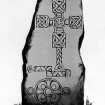
That's not depicting a cauldron.
It looks a bit more like the Wandsworth Shield
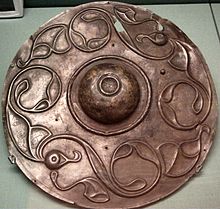
Found in London, by the Thames, the shield dates from 2nd c BC. Thought to be made in England except it is almost identical to the Torrs Pony Cap :

Or perhaps just from Scotland, thank you very much scholars.
Look at the Monymusk stone:


That's not depicting a cauldron.
It looks a bit more like the Wandsworth Shield

Found in London, by the Thames, the shield dates from 2nd c BC. Thought to be made in England except it is almost identical to the Torrs Pony Cap :

In a Scottish context, the cap has been seen as a leading example of a distinctive "Galloway style" of La Tene art, closely related to developments in northern Ireland, a short distance across the Irish Sea.[17] Other scholars see the pieces as imported products, perhaps from "east-central England".[18][19]
Or perhaps just from Scotland, thank you very much scholars.
So.....according to this....Arthur's Camelot is in..........WIGAN!
www.manchestereveningnews.co.uk...
And there's more here with a 45sec vid of the 'pond' in question
www.wigantoday.net...
Rainbows
Jane
Famous for its pies and Northern Soul, former mining town Wigan could also be home to the legendary Camelot, according to an an eminent historian.
Graham Robb says a small patch of woodland in a suburb of Standish could have been home to a settlement linked to the legendary King Arthur.
Manchester-born Robb, 55, a distinguished historian who has picked up a string of literary prizes and whose work has been hailed by the New York Times, has spent years studying Celtic civilisations in Europe.
The former Oxford don claims that Ancient Britons as well as Celtic people living in France and Spain were far more sophisticated than previously thought.
His book The Discovery of Middle Earth: Mapping the Lost World looks at how ancient people built many towns and settlements along straight lines based on the setting, solstice sun.
Mr Robb says two of Britain’s most important lines intersect just off Old Pepper Lane - yards away from a heart-shaped lake and thick woodlands near Almond Brook.
www.manchestereveningnews.co.uk...
And there's more here with a 45sec vid of the 'pond' in question
www.wigantoday.net...
Rainbows
Jane
reply to post by angelchemuel
Wigan! Lol!
Oh well, maybe, who knows!
The confusing thing about the Arthurs is that they are both linked in with Scotland. Gwynnyfar (sp)/Guinivere is supposed to be buried at Meigle, and her stone shows her being ripped to pieces by wild beasts:
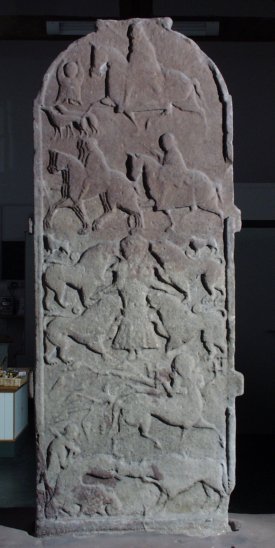
I was reading an historian's blog last night, where he said the quickest way to go mad is to try and understand the Pict's stones!
Glad it'll be quick then!
However, in that stone she has Epona's hat, and below her is a centaur. Now what did they mean by that, I wonder?
Wigan! Lol!
Oh well, maybe, who knows!
The confusing thing about the Arthurs is that they are both linked in with Scotland. Gwynnyfar (sp)/Guinivere is supposed to be buried at Meigle, and her stone shows her being ripped to pieces by wild beasts:

I was reading an historian's blog last night, where he said the quickest way to go mad is to try and understand the Pict's stones!
Glad it'll be quick then!
However, in that stone she has Epona's hat, and below her is a centaur. Now what did they mean by that, I wonder?
beansidhe
reply to post by angelchemuel
Wigan! Lol!
Those beast look like Lions. And just what are those small beasts riding on the back of the top two beasts? Monkeys?
Anyway they look like these are not tearing at her but showing respects......but we could be mad by now and not know it. Maybe he means we will go mad like they were mad. Winged disks, syntar...strait out of la la land. Imagine if some armed host came riding across the mountains into your little town bearing standards of this sort......you would think that hell hath opened its mouth somewhere on the earth and spewed forth agents of destruction.
Below is posted some examples of beast in arms in similar fashion as those above. This sort of artistic representation on arms goes allllll the way back to the Sumerian area. As old as the hills themselves. Note raised arm.
Coat of Arms
new topics
-
Weinstein's conviction overturned
Mainstream News: 1 hours ago -
Supreme Court Oral Arguments 4.25.2024 - Are PRESIDENTS IMMUNE From Later Being Prosecuted.
Above Politics: 2 hours ago -
Krystalnacht on today's most elite Universities?
Social Issues and Civil Unrest: 2 hours ago -
Chris Christie Wishes Death Upon Trump and Ramaswamy
Politicians & People: 3 hours ago -
University of Texas Instantly Shuts Down Anti Israel Protests
Education and Media: 5 hours ago -
Any one suspicious of fever promotions events, major investor Goldman Sachs card only.
The Gray Area: 7 hours ago
top topics
-
VP's Secret Service agent brawls with other agents at Andrews
Mainstream News: 16 hours ago, 11 flags -
Krystalnacht on today's most elite Universities?
Social Issues and Civil Unrest: 2 hours ago, 7 flags -
Nearly 70% Of Americans Want Talks To End War In Ukraine
Political Issues: 17 hours ago, 6 flags -
Sunak spinning the sickness figures
Other Current Events: 17 hours ago, 5 flags -
Electrical tricks for saving money
Education and Media: 15 hours ago, 5 flags -
Supreme Court Oral Arguments 4.25.2024 - Are PRESIDENTS IMMUNE From Later Being Prosecuted.
Above Politics: 2 hours ago, 5 flags -
Weinstein's conviction overturned
Mainstream News: 1 hours ago, 4 flags -
University of Texas Instantly Shuts Down Anti Israel Protests
Education and Media: 5 hours ago, 3 flags -
Any one suspicious of fever promotions events, major investor Goldman Sachs card only.
The Gray Area: 7 hours ago, 2 flags -
Chris Christie Wishes Death Upon Trump and Ramaswamy
Politicians & People: 3 hours ago, 1 flags
active topics
-
Supreme Court Oral Arguments 4.25.2024 - Are PRESIDENTS IMMUNE From Later Being Prosecuted.
Above Politics • 39 • : xuenchen -
Chris Christie Wishes Death Upon Trump and Ramaswamy
Politicians & People • 13 • : mysterioustranger -
"We're All Hamas" Heard at Columbia University Protests
Social Issues and Civil Unrest • 283 • : FlyersFan -
Weinstein's conviction overturned
Mainstream News • 11 • : 5thHead -
University of Texas Instantly Shuts Down Anti Israel Protests
Education and Media • 105 • : cherokeetroy -
Candidate TRUMP Now Has Crazy Judge JUAN MERCHAN After Him - The Stormy Daniels Hush-Money Case.
Political Conspiracies • 747 • : Justoneman -
Nearly 70% Of Americans Want Talks To End War In Ukraine
Political Issues • 81 • : FlyersFan -
Biden--My Uncle Was Eaten By Cannibals
US Political Madness • 73 • : CarlLaFong -
-@TH3WH17ERABB17- -Q- ---TIME TO SHOW THE WORLD--- -Part- --44--
Dissecting Disinformation • 671 • : daskakik -
VP's Secret Service agent brawls with other agents at Andrews
Mainstream News • 46 • : CarlLaFong

